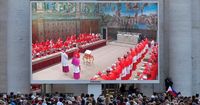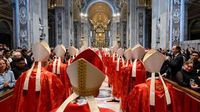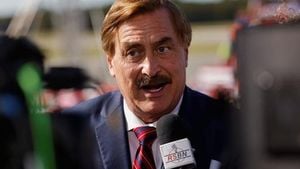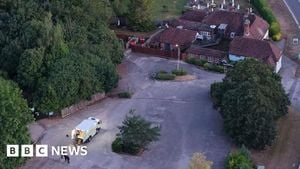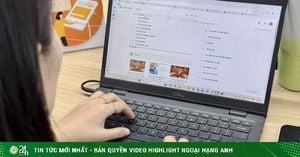On Wednesday, May 7, 2025, a historic papal conclave commenced inside the Sistine Chapel at the Vatican, marking a significant moment for the Catholic Church as it seeks a successor to Pope Francis, who passed away 16 days earlier at the age of 88. This conclave, which is the first in over a decade, brings together 133 cardinal electors from five continents, making it the largest group of voting cardinals in history.
The day began with a solemn mass at St. Peter's Basilica, led by Cardinal Giovanni Battista Re, the dean of the College of Cardinals. In his homily, Re urged the cardinals to choose a pontiff who can navigate the Church through its current challenges, stating, "We are here to invoke the help of the Holy Spirit, to implore his light and strength so that the pope elected may be he whom the Church and humanity need at this difficult and complex turning point in history." He emphasized the need for unity within the Church amidst diversity.
After the mass, the cardinal electors processed to the Sistine Chapel, where they took an oath of secrecy, pledging to maintain confidentiality regarding the election process. The oath, recited in Latin, included a commitment to uphold the integrity of the voting process: "We promise and swear not to break this secret in any way, either during or after the election of the new pontiff, unless explicit authorization is granted by the same pontiff." Following the oath, Archbishop Diego Ravelli declared "extra omnes," signaling the exit of all non-electors from the chapel.
The conclave is held under strict security and secrecy. Digital devices are prohibited, and the chapel is sealed to prevent external influences. The cardinals will vote in rounds, with the first round expected to take place on the same day. If no candidate receives the necessary two-thirds majority, black smoke will emerge from the chapel's chimney, indicating that the voting will continue the following day.
Among the leading candidates for the papacy are Cardinal Pietro Parolin, the Vatican's Secretary of State, and Cardinal Luis Antonio Tagle from the Philippines, who has been dubbed the "Asian Pope Francis" due to his progressive views on various social issues. American Cardinal Raymond Burke is also considered a strong contender, known for his conservative stance within the Church.
This conclave is particularly notable for its diversity. With 27 cardinals from Asia and Oceania, the influence of the global South is more pronounced than ever. Furthermore, 80% of the cardinals participating were appointed by Pope Francis, which could affect the dynamics of the voting process.
As the cardinals prepare to cast their votes, the outcome of this conclave is expected to reflect the ongoing tensions within the Church between progressive and conservative factions. The election will not only determine the next leader of the Catholic Church but also signal the direction the Church may take in addressing contemporary issues.
In addition to the political implications of the conclave, the setting itself is steeped in history and artistry. The Sistine Chapel, adorned with Michelangelo's masterpieces, serves as a powerful backdrop for the cardinals' deliberations. It has been suggested that the art within the chapel may inspire the electors as they contemplate their decision, reminding them of the spiritual weight of their choice.
As the conclave unfolds, the world watches closely, waiting for the signal of white smoke that will announce the election of a new pope. The anticipation surrounding this event is palpable, with millions of Catholics looking to the cardinals to guide the Church into a new era.
In summary, the papal conclave that began on May 7, 2025, is a pivotal moment for the Catholic Church, reflecting its global diversity and the significant challenges it faces. With the eyes of the world upon them, the cardinal electors are tasked with the solemn responsibility of choosing the next pope, a decision that will shape the future of the Church and its role in the world.
